By Claire Bacon, ACN, CNC
We’ve all been there – wondering if something we’re eating or not eating is the answer to reaching perfect health. We are inundated with advertising and messages from “health experts” who all claim to have the one simple answer to our woes. No matter what symptoms we’re feeling, it all comes down to eating or avoiding this “one simple food”. And of course there are plenty of experts out there selling this “one simple supplement”. But what if you’re already trying that, and it’s not working? What if your healthy diet is not so healthy after all?
But should we first start with examining what we’ve been eating, and where we could be going wrong? Sometimes, healthy foods can be good for one person, but terrible for another. How would you know? There are certain symptoms you could expect when you overdo it in any “healthy” direction.
Eating Too Much Protein and Saturated Fat
A healthy diet needs to include some amount of protein and fat, so our bodies have the building blocks of amino acids and essential fatty acids for growth and repair. Especially if you’re working on building muscle and losing fat, you might be trying out the Carnivore diet or just eating a lot more animal protein and protein shakes than usual.
Maybe this is healthy for you, but maybe not? The key to any diet is you have to be able to digest it, first! What would be a sign you’re not digesting your proteins and fats well? If you don’t have the stomach acid or bile reserves you need, your body will give you some clues…
- Constipation
- Clogging toilets with bulky stools
- Heartburn and indigestion
- Feeling sluggish and burping after meals
- High blood pressure
- Stinky gas
- Low back pain and hip pain
- Increased inflammation due to excess fibrin.

What’s fibrin?
Fibrin is a stringy substance in the blood that promotes blood clot formation. It’s created by the conversion of fibrinogen, which is a certain protein you can measure in the blood. Your body uses thrombin to convert the protein fibrinogen into the protective mesh called fibrin. This is the helpful process that can form a blood clot to stop bleeding. But this process can get out of hand quickly – one from eating too much meat, but also from stressing out too much. If you’re running from a tiger, and you might get eaten by that tiger, this protective mechanism kicks in early – to be ready for when the mauling and bleeding starts.
A survey of 1800 people found that high fibrinogen was associated with deficiencies of vitamins and minerals – you know we’re always talking about more minerals! And it was found with high levels of cholesterol and fatty acids. This suggests that lower fruit and vegetable intake and higher amounts of processed foods, meat, and fat can increase chronic inflammation and fibrinogen levels.
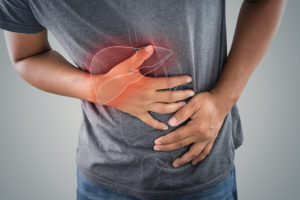
Remember how close your digestive system is to your low back. Chronic low back pain can be just as much a digestive issue as can be abdominal pain. But we often forget to think of diet when our back hurts!
Something else interesting… A study of 16 people found that fibrinogen increased by 20-40 percent immediately after the participants drank a protein shake or a replacement-meal shake, but not after drinking water. Huh. Maybe all this high-protein craze is not really the best thing for some people?
Genetic Factors
In addition, you may see in a detailed cholesterol analysis (NMR) that your small dense LDLs are out of line. This is an obvious clue to cut down on the animal protein (and maybe bump up your hydrochloric acid/bile salts digestive support).
Oftentimes, this has to do with your genetics. You wouldn’t know about this unless you run a detailed genetics panel, such as Reveal My DNA. Some people just simply are not meant to eat a lot of meat and saturated fat. Maybe this has something to do with your blood type? Maybe it’s because of where your ancestors are from? Or it could be a serious condition you’ve developed. But whatever it is, you should not consume the foods your body is not well-suited to digest.
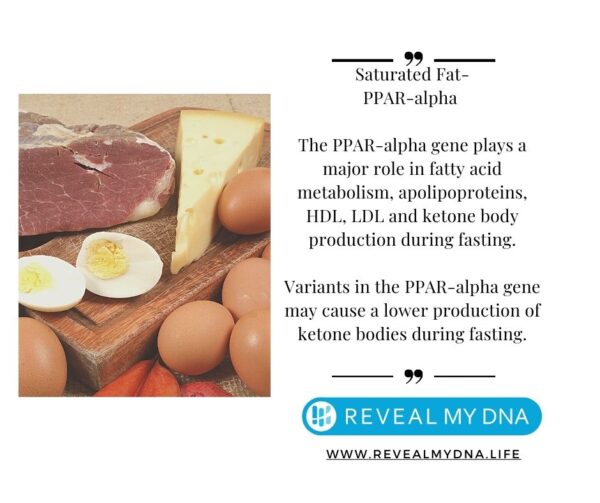
Enzymes to the Rescue
Enzymes are the internal catalysts produced by our digestive organs that regulate metabolism and maintain our stamina and energy levels. In short, enzymes “make things go”. Proteolytic enzymes are the little workers that break down proteins into shorter fragments (peptides) and then into smaller building blocks (amino acids). Common proteolytic enzymes include…
- Pepsin
- Bromelain
- Papain
- Protease
- Serrapeptase
Ideally, we should get the enzymes we need from our food – but these need to be raw and/or fermented. Best sources include: pineapple, ginger, papaya, kiwi, sauerkraut, yogurt, kefir, and miso.
As a normal course of aging, and when we eat a highly cooked or processed diet, we lose the ability to make enough enzymes. This is why we often need to use supplements. Some of our favorites include:
- Enzycore (for vegetables)
- Okra Pepsin E3 (for intestinal inflammation)
- Zypan (for meats)
- Carbo-G (for grains) Available in office.
- Intenzyme Forte (general use)
- Serra Gold (for adhesions and scarring)
- Nattokinase or Bromelain Plus CLA (for blood clotting and inflammation)
- Divine Nature Inflammation (for injury or pain). Available in office.
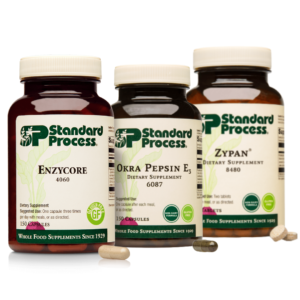
Remember, when you take enzymes with a meal, they help digest your food. Taken on an empty stomach, enzymes help with inflammation. You really can’t overdo it on this. We often recommend to take enzymes every hour, all day long when you’re hurt.
Not Enough Protein in your Healthy Diet
After all that, you might think Vegetarians have it made. But Vegetarians have to be very proactive with getting in enough protein – and often they fall short. Vegetable and grain sources of protein provide some amino acids, but a different or incomplete profile in each different food. Therefore, you need a wide variety of all these different vegetables and grains to completely get what you need. But are you eating enough variety – or cycling the same limited foods over and over?
Symptoms of not eating enough protein might be…
- Fatigue
- Cravings and insatiable hunger
- Dull skin and hair
- Hair falling out
- Weak nails
- Recurrent infections
Complete proteins are formed when all essential amino acids are present. Animal proteins are complete proteins. There are nine essential amino acids that the body absolutely needs to function. If you’re not getting enough protein for your needs, we recommend using Perfect Amino to cover your bases. (Available in office).
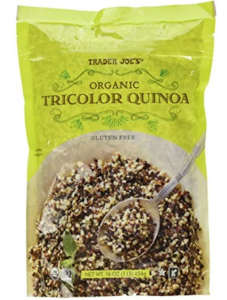
For instance, common plant-based proteins like legumes (peanuts, lentils and chickpeas) and nuts (walnuts, almonds, etc.) are cholesterol-free, but are not complete proteins by themselves. For this reason, “food combining” becomes very important. The best choices are quinoa, organic & fermented tofu, chia seeds, and hemp seeds, as these are more complete vegetarian proteins. Any of these could be combined with less complete sources, to make a better meal. You could do…
- Nuts & seeds with whole grains (almond butter and whole grain bread)
- Nuts & seeds with beans/legumes (cashews and chickpeas)
- Whole grains with beans (rice and black beans)
- Organic tofu and organic peanuts (remember the conventional stuff is poisoned)
- Tempeh and lentils
- Kidney beans with edamame and chickpeas
Too Many Grains and Legumes in your Healthy Diet
At the same time, Vegetarians have a challenge to make sure they’re not eating too many starchy foods. Remember, grains and starches metabolize like sugar. You want to be a vegetarian “the right way”, as in eating vegetables. You want lots of colorful vegetables, not a “beige” diet of carbs and grains. We want to “eat the rainbow”!
Does that make sense?
We want our Vegetarians to eat nutrient-dense foods, full of vitamins and minerals. Not a lot of starch. Unless you are a marathon runner, you probably don’t need the amount of grains and starches you’re eating.
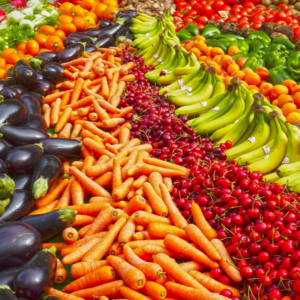
We know to avoid overly processed grains, like in white bread. However, many “whole grains” contain phytic acid, which is an anti-nutrient that can make it hard for our digestive systems to absorb nutrients from the grain. Phytic acid can also strip nutrients from our digestive system.
Remember, food manufacturers feed their livestock a diet of corn, rice, potatoes, cereal grains, and wheat byproducts – high starchy foods – to fatten them up. And these foods do the same thing to us!
Too Many Fermented Foods
Kombucha, Kim Chi, and cultured vegetables provide lots of different bacteria, beneficial yeast, and enzymes. These are traditional foods that have been consumed for years. They can go a long way towards restoring a dysfunctional gut lining. In addition to providing the living organisms we need in the gut, fermented foods provide prebiotic fibers that the bacteria need to consume. In this way, cultured vegetables, fermented pickles, and raw sauerkraut are much more beneficial than a sugary yogurt. It’s worth trying new things to increase your gut diversity!
However, when you overdo it on fermented foods, it can cause a lot of bloating. Many people who start making their own Kombucha (growing a SCOBY) might learn this the hard way. When you have a delicious and healthy beverage brewing for free in your own kitchen, you’ll be tempted to have it every day. Maybe quite a lot every day! And then, you may be surprised to find your gut bloating more. Are you pregnant? Or just drinking too much Kombucha? Hmm…

Eating Nightshade Vegetables
Nightshades like tomatoes, bell peppers, eggplant, and white potatoes can cause inflammation, especially when the gut lining is dysregulated. We often see this with autoimmune conditions. Whether you have Rheumatoid Arthritis, Psoriasis, Hashimoto’s, or Addison’s, etc., any level of autoimmunity indicates you need to do some healing in the gut. And that means avoiding certain inflammatory foods. More than just your typical gluten, dairy, and sugar, autoimmunity requires that you also avoid corn, soy, legumes, nightshades, eggs, nuts, and seeds.
What’s left? Meat, lettuce, and other kinds of vegetables. So, you can see that many people trying to follow a “healthy” vegetarian diet might actually be choosing the wrong kinds of vegetables and non-meat foods.
We recommend the Autoimmune Protocol (AIP) diet. This is a comprehensive plan that starts out being very restrictive, but gradually allows you to add some of these foods back in. As you look for symptoms to return, you gain valuable insight into what foods work for you, and which ones are sensitivities.
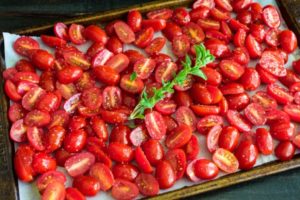
Smoothies Can Hurt Your Stomach
We love smoothies! We make them all the time. What a great way to get so many different nutritious foods – all at once! But sometimes, that could be a problem. Some people’s systems are so sensitive that they need to keep meals very simple. Not too many different kinds of foods, and not too many flavors. You see, when you chew your food, the brain is picking up on what is about to come in. As you’re chewing and tasting your food, enzymes start being produced in your saliva. And the rest of your digestive system gets ready to do their thing. However, when you have a smoothie, there could be 10 or 20 different ground up ingredients. And they spend about half a second on your tongue before you suck it down. So the brain doesn’t get much of a heads up, and it can be a bit of a shock to the stomach, caught unaware.
Another issue is what you might be putting in your smoothie. If you’re cutting down on coffee, you might be adding some Matcha green tea to your smoothie. If you’re working on hormones and endurance, maybe you’re adding Maca powder from time to time. Or if you’ve heard that MCT oil has great benefits, you might be adding that, too. All of these are good. But any one of these things – if you have too much – could be really harsh hitting your stomach all at once. We recommend no more than 2 tsp of Matcha, Maca, or MCT in your smoothie. Take it easy. Don’t pound your smoothie!
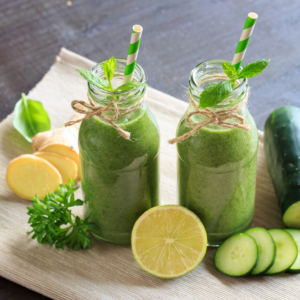
Long Story Short for your Healthy Diet…
Long story short, it all comes down to optimizing your digestion for the diet you’re trying to eat. Or, the other way around… Maybe it would work better to optimize your diet for what your body wants to digest.
Either way, the key is to listen to your body. Hear what it is saying. Make a mental note of what you feel 2 to 24 hours after eating certain foods. Self-analyze. When did your problems start? Was this triggered by a stressful event – maybe during a time when you started trying something new with your diet?
We need to be open-minded and not dogmatic when we listen to nutritional advice. Be willing to try something a different way. Our bodies tell us everything we need to know, if only we would listen!


